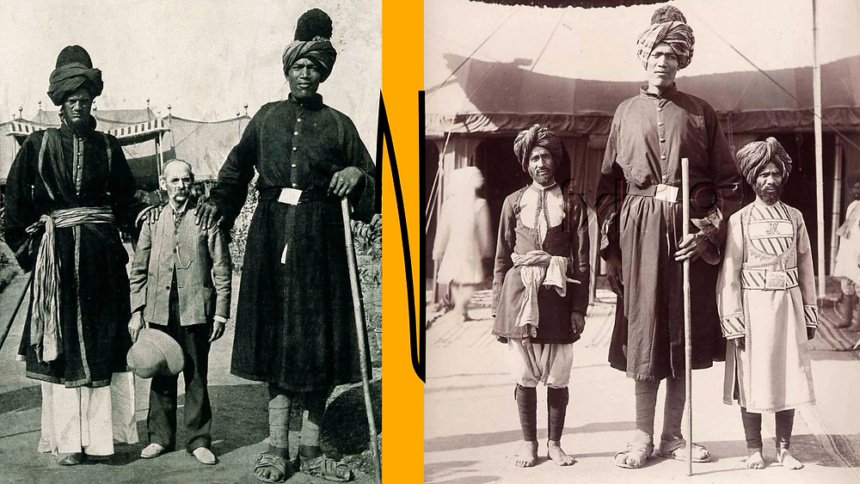The term “Kashmir Giants” refers to both legendary figures and prominent individuals from the region who have shaped its rich cultural and historical landscape. At the heart of Kashmir’s history, these giants symbolize strength, courage, and wisdom. Today, we explore their lasting impact on Kashmir’s culture and folklore, as well as their importance in the modern-day perception of this beautiful region.
Who Are the Kashmir Giants?
Kashmir Giants have their roots in both mythology and real historical figures. Some are the heroes of ancient tales passed down through generations, while others are the influential leaders who shaped the region. From mythological figures with supernatural powers to kings, warriors, and poets, these giants reflect the rich diversity of Kashmir’s past.
In Kashmiri folklore, these giants often represent hope, protection, and the strength to overcome challenges. Through stories told by families and communities, these legendary giants serve as a source of pride and a connection to a rich and ancient culture.
The Cultural Significance of Kashmir Giants
The cultural significance of Kashmir Giants cannot be overstated. Throughout history, they have been symbols of resilience and have helped the people of Kashmir unite during times of adversity. Whether through traditional storytelling, festivals, or artworks, Kashmir Giants are woven into the very fabric of the region’s identity.
In some parts of Kashmir, annual celebrations are held to honor these figures. These events keep the stories alive and serve as a reminder of the values these giants represent: honor, loyalty, and courage. The transition of these stories from generation to generation ensures that the legends of the Kashmir Giants remain relevant even in modern times.
Famous Historical Kashmir Giants
Kings and Warriors
One of the most significant Kashmir Giants in history was Lalitaditya Muktapida, an ancient king who ruled in the 8th century. He was known for his military conquests, expanding the boundaries of his kingdom beyond Kashmir. His strategic skills and leadership turned him into a legendary figure whose impact is still remembered.
Similarly, Sultan Zain-ul-Abidin, also known as “Budshah,” is another historical giant. His reign is remembered for promoting peace, culture, and religious tolerance. Under his rule, Kashmir experienced a golden age of art, literature, and crafts, leaving an enduring legacy that transformed the cultural landscape of the region.
Poets and Scholars
Kashmir has also produced intellectual giants whose influence transcended borders. One such figure is Lal Ded, a poetess and mystic from the 14th century. Lal Ded’s verses remain deeply embedded in the spiritual consciousness of the region. She challenged societal norms and encouraged people to look inward for spiritual growth and truth.
Another important figure is Sheikh Noor-ud-din Wali, a revered saint and poet, who is often considered the spiritual giant of Kashmir. His teachings of unity, love, and compassion continue to inspire people. His poetry often included wisdom about living harmoniously and his message of peace echoes through the valley even today.
The Legends of Kashmir Giants in Folklore
The Mythical Giants of Kashmir
In addition to real-life heroes, Kashmiri folklore is filled with tales of mythical giants. One such tale speaks of a giant named Raja Rasalu, a legendary prince known for his incredible strength and wisdom. His adventures are a common subject of folk songs and stories, where he often battles monsters and overcomes impossible odds.
The tales of these mythological giants play an important role in shaping Kashmiri identity. They represent the triumph of good over evil, resilience in the face of adversity, and the idea that even the most difficult challenges can be overcome with courage and wisdom.
Kashmir Giants and Modern-Day Influence
Even in today’s world, the stories of Kashmir Giants continue to influence the people of the region. These giants are often seen as a source of inspiration, especially in times of difficulty. The way their stories are used to encourage resilience and unity shows just how relevant they remain in contemporary Kashmiri society.
Artists, poets, and writers still draw on the legacy of these giants in their work. Through film, literature, and the visual arts, these legendary figures continue to shape the cultural expression of the region. They serve as a reminder that the history of Kashmir is full of heroes who have fought, in various ways, to protect its identity and values.
The Connection Between Kashmir Giants and Local Festivals
Festivals in Kashmir often include references to these historical and mythological giants. For instance, during local celebrations, traditional dances and songs sometimes recount the brave acts of figures like Lalitaditya or mythical heroes like Raja Rasalu. These festivals are not only a time to celebrate but also to educate younger generations about the giants who shaped the region.
In recent years, there has also been a resurgence of interest in preserving these cultural practices. Various initiatives have been taken to document these stories and include them in school curriculums. This helps ensure that the next generation understands the importance of Kashmir Giants and the values they represent.
How the Kashmir Giants Shaped the Region
Kashmir’s history is deeply intertwined with its giants, both historical and mythical. These figures shaped the political, social, and cultural landscape of the region. Whether through warfare, poetry, or governance, their contributions have left an indelible mark. Understanding their stories provides insight into the resilience and cultural richness of Kashmir.
Kashmir Giant’s also provide a sense of identity for the people of the region. Their stories are more than just tales of the past; they are lessons in how to live, how to be resilient, and how to stay connected to one’s roots. They offer a model of leadership, bravery, and wisdom that is still relevant today.
Read more: Pablo Escobar White House Visit: The Truth Behind the Myth
FAQ: Kashmir Giants
The Kashmir Giants are both mythological and historical figures who have played a major role in shaping the culture and history of Kashmir. These include kings, warriors, poets, and spiritual leaders who left an indelible mark on the region.
The Kashmir Giant’s are important because they symbolize the strength, courage, and wisdom of the Kashmiri people. They continue to inspire through their stories of resilience, bravery, and cultural contributions.
Yes, some famous Kashmir Giant’s include historical figures like King Lalitaditya Muktapida and Sultan Zain-ul-Abidin. Mythological giants like Raja Rasalu are also celebrated in Kashmiri folklore.
Kashmir Giant’s are remembered through storytelling, festivals, and artistic expressions. Their influence can be seen in literature, art, and the spiritual traditions of the region.
Conclusion: The Lasting Legacy of Kashmir Giants
The Kashmir Giants, both mythical and real, continue to influence the people and culture of the region. These legendary figures represent the bravery, wisdom, and resilience of Kashmir, offering lessons that remain relevant even today. By remembering and honoring these giants, Kashmir maintains a strong connection to its rich history and cultural heritage.
The stories of these giants have been passed down through generations, ensuring that their legacy lives on. Whether they are celebrated through folklore, historical accounts, or festivals, the Kashmir Giants remain a vital part of the region’s identity and collective memory.





